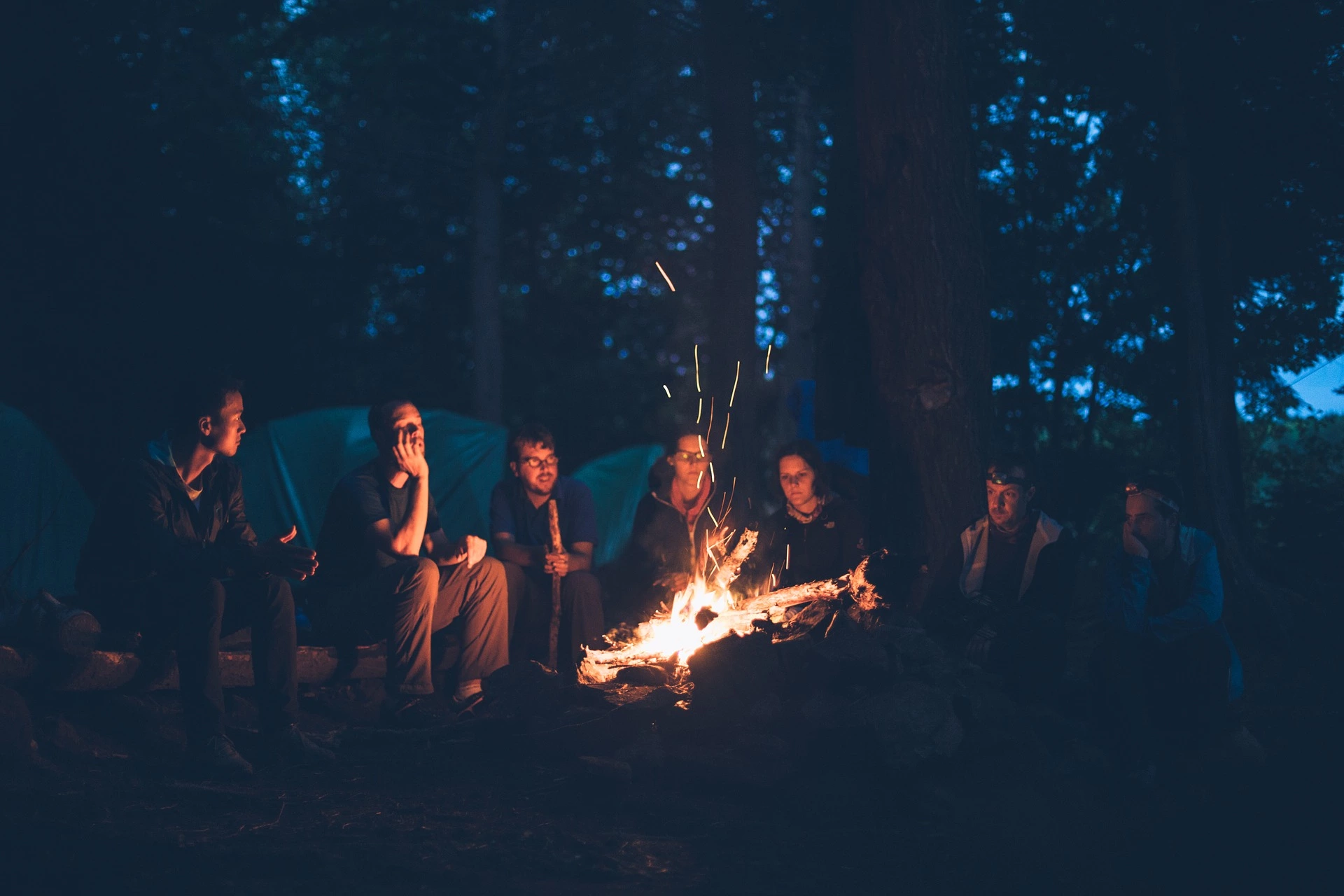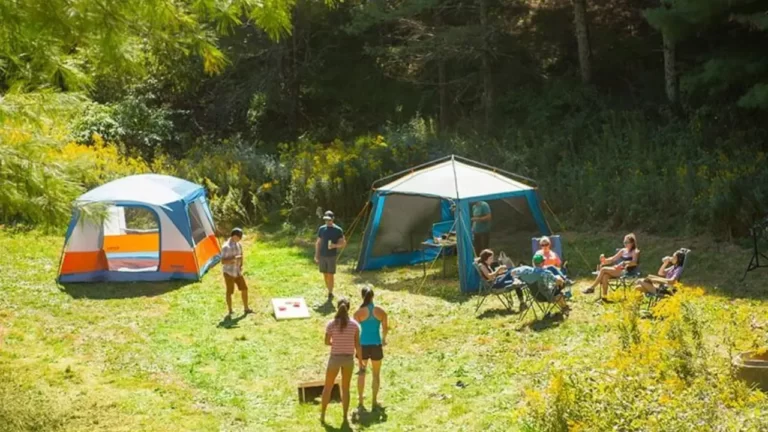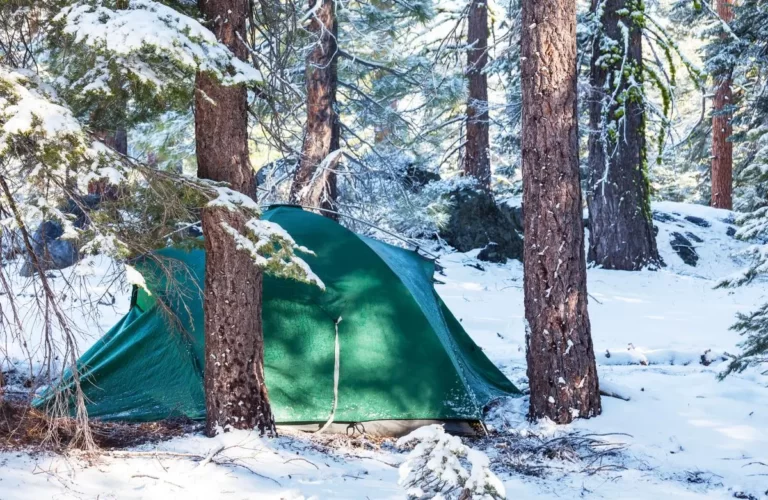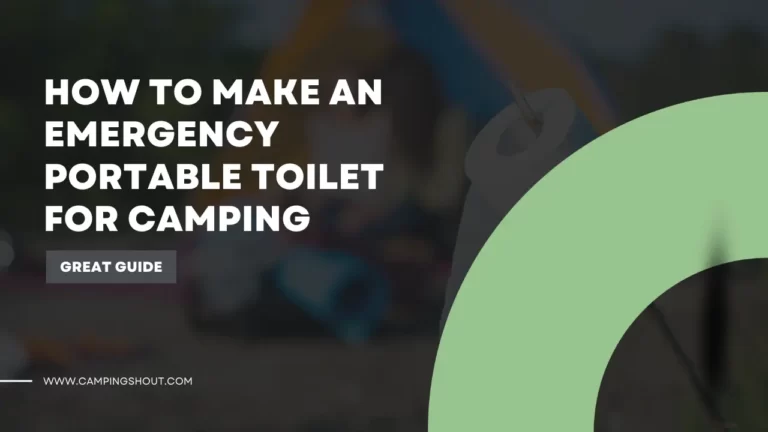How to Heat a Camping Tent In 2023
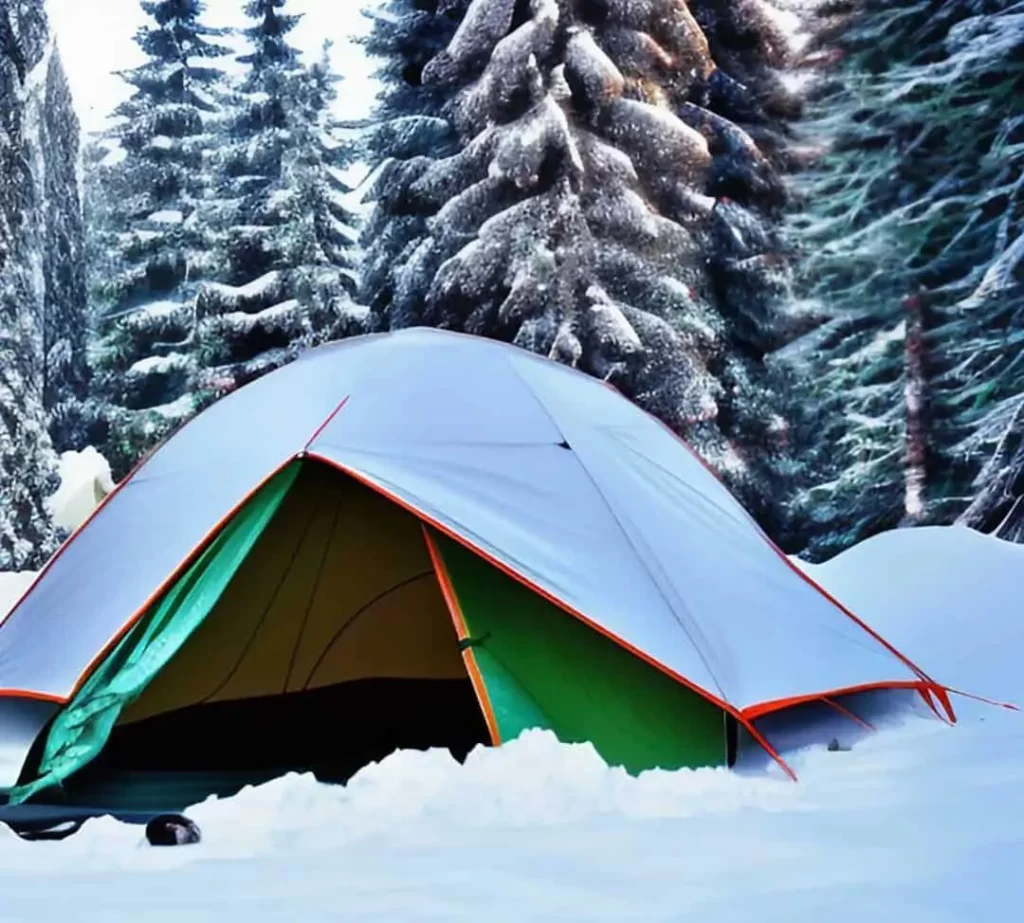
Camping in winter can become a difficult task for you, as the winter nights disturb your camping experience, and how to heat a camping tent becomes the most critical thing for you when you camp in the winter season. A freezing tent may finish your camping journey before due time.
To avoid your distractions from camping, I have compiled so many old and modern ideas to make your tent hot that will make your camping journey comfortable. It is not necessary to use all ideas to heat your tent. Read them properly and use which is the best one for you. But before using any idea, take precautionary measures to save your tent from fire and achieve the best results.
Contents
- How to Heat a Tent Without Electricity
- Modern Strategies for Warm Camping Tent
- Final Thoughts:
- FAQ:
- Q1: What are some signs of a potential flood I should look out for while camping?
- Q2: What should I do if I get caught in a thunderstorm while camping?
- Q3: How can I keep my spirits high if it begins to rain during my camping trip?
- Q4: How should I choose a suitable campsite?
- Q5: What’s the difference between a three-season and a four-season tent?
How to Heat a Tent Without Electricity
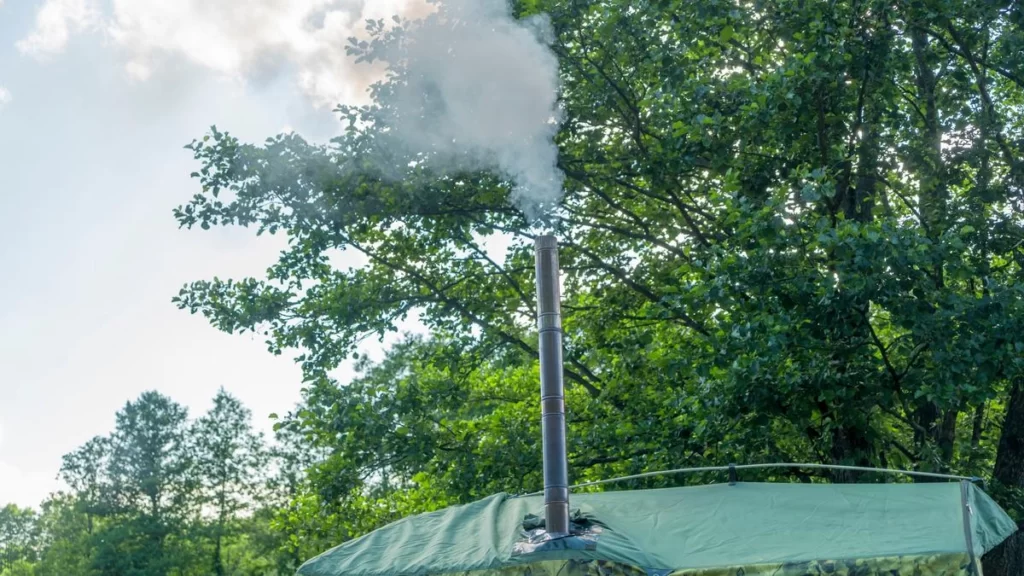
Heat Your Tent with Water Bottles
You can heat your tent without electricity with a few simple techniques. Thermal mass is the best procedure to warm your tent without spending your precious money. Thermal mass works like a heater. It absorbs the heat and releases it slowly. There are so many things that can be used as a thermal mass but water is the most suitable source of thermal mass.
You need a boiling pan and some plastic bottles. Heat the water to boiling point and fill in the plastic bottles. Note that these plastic bottles should be enough strong to resist boiling water for a long time. Now wrap these bottles in a cloth and spread them in the tent around your airbed. These bottles will release heat whole the night and your tent will be hot till the morning.
2- Heating Rocks to Keep the Tent Warm
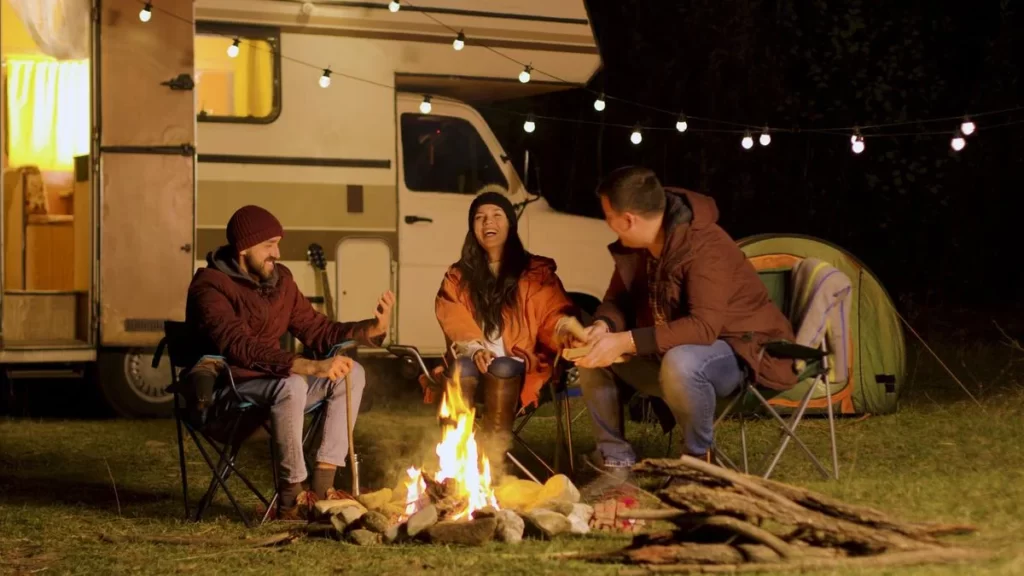
Heating rocks to keep the tent warm on winter nights is an old technique. It seems like the water method, but it is a faster and better method than that. Collect some stones, place them in a circle, keep wood in the circle, and fire them. Pick the stones with a cloth when they become hot and place them around your tent. Wrap the stones in some textile material, so that they may remain warm and release heat whole the night. Note that don’t take the hot stones in your tent. Otherwise, your tent will lose its precious tent.
3- Set Up Your Tent on Top of a Campfire (after the fire dies)
This method is better than the above methods to keep your tent warm. In this case, you have to make a trench around your tent place. The trench should be 12 inches deep, so that your camp location may warm quickly. Burn the woods and coals in the trench as much as possible. When the fire stop and the woods turn to ashes, fill up the trench and set up the tent over it. Now you can sleep whole the night peacefully. It will keep your tent warm till the morning.
Warning:
To ensure your safety and prevent overheating, it’s important not to use the blanket inside your sleeping bag. The heat generated by the blanket needs to naturally dissipate, and placing it inside the sleeping bag can hinder this process, potentially causing overheating issues. Keep the blanket outside the sleeping bag to maintain proper temperature regulation and ensure a comfortable sleeping experience.
Modern Strategies for Warm Camping Tent
If you are not satisfied with old techniques, you can use modern strategies to keep your tent warm. Modern technologies are a hundred times better than old techniques, but modern techniques will empty your pocket. Because, modern technologies like electric heaters, electric blankets, and electric airbeds are more expensive than old techniques. On the other hand, modern facilities are the best items to warm your tent in a few seconds without any hurdles.
1- Electric Heater for Tents
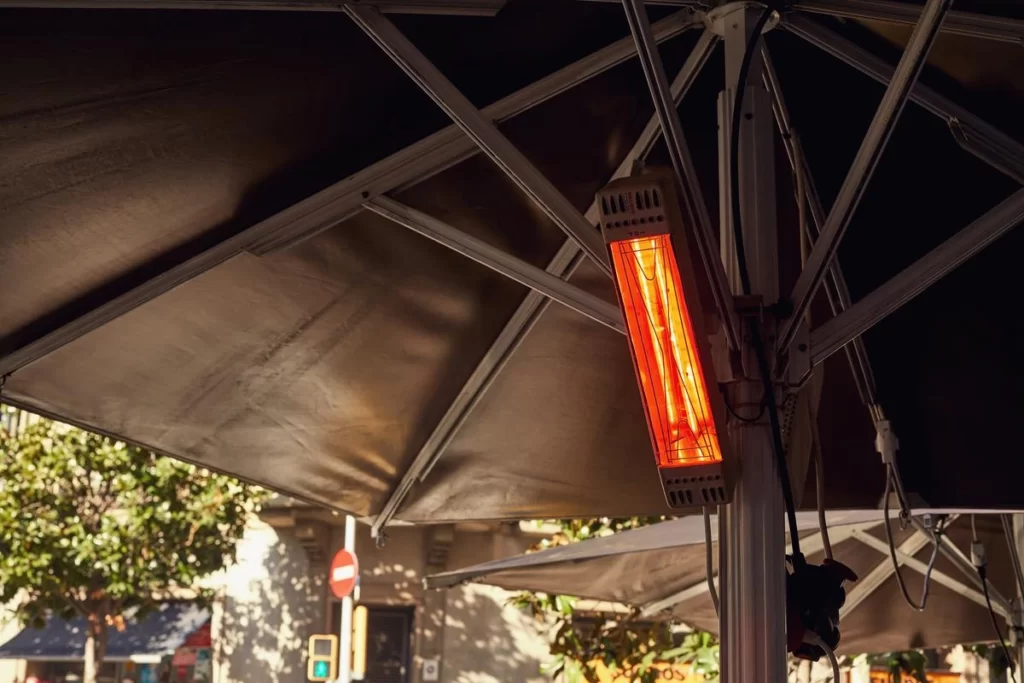
An electric heater is the best resource to warm your tent. It is the best device to warm your tent safely. This splendid device saves you precious time and energy. If you use any other technique to warm your tent, you have to go quickly under the blanket.
On the other hand, an electric heater allows you to sit easily in your tent for book reading, playing cards, and other activities without covering yourself. It produces heat and warms your cold tent within fifteen minutes. It is a portable unit and you can take it out of your tent for playing cards and other activities. It is the safest way of getting heat than the above-mentioned resource. If your tent is small, you can hang it with the lantern hook. But make sure that the lantern hook should be enough strong to lift it easily.
2- Electric Blanket
You are thinking that we want to know about how to heat a camping tent, but I am talking about an electric blanket. How is it ridiculous? You should keep in mind that you want to warm your body. The method could be different, but the purpose is the same. An electric blanket is another super device to get heat on cold winter nights.
This idea is safe to use and gets heat whole the night. It has thin electrical wires that produce heat and makes your tent cozy. These wires do not touch you directly, therefore you do not need to worry about any mishap. Its mechanism is automatic. It operates if the temperature is less than 25 Celsius and stops working if the temperature is up to 48 Celsius. The electric blanket is a good idea for all types of indoor and outdoor activities.
3- Underfloor Heating Carpets

Underfloor heating carpets are excellent to make your tent cozy and comfortable. These carpets work like an electric blanket. The electric carpet has electric wires that produce heat and keeps make your tent warm whole the night. The electric heating blanket is the best idea to make your tent warm. It will make your camping journey easy and comfortable.
Final Thoughts:
My conclusion about this beautiful topic is that if you are a nature lover, then you should adopt old methods of heating your tent. It carries you near nature and makes you a man of the stone age. And, if you want to make your tent without any struggle, you can adopt electrical devices for the best results.
Some other tips for retaining heat inside your tent:

Choose Your Campsite Wisely
The location of your tent plays a crucial role in temperature regulation. Ideally, you should select a spot that’s shielded from the wind. Proximity to large rocks or trees can provide natural insulation. However, always prioritize safety and avoid camping under trees that may fall or in areas prone to flooding.
Use a Tent Footprint
A tent footprint not only protects your tent’s floor from wear and tear, but it also adds an additional layer of insulation between your tent and the cold ground. By minimizing direct contact with the cold surface, a footprint helps to keep the inside of the tent warmer.
Opt for a Four-Season Tent
Four-season tents are specifically designed to withstand harsh winter conditions. They are generally constructed from robust materials and feature less mesh, which aids in heat retention. While they might be heavier to carry, the increased warmth makes them worthwhile for camping in colder climates.
Insulate Your Tent with a Space Blanket
A reflective space blanket can be used to line the interior of your tent. This will help retain heat inside by reflecting body heat back into the tent rather than letting it escape through the tent material.
Dress in Layers and Use a Suitable Sleeping Bag
While not directly related to the tent, dressing warmly and using a proper sleeping bag greatly contributes to keeping warm. Layer your clothes and use a sleeping bag rated for the lowest expected temperature. Also, consider using a sleeping bag liner for added warmth.
Use a Tent Heater
Consider using a tent heater designed specifically for camping. These heaters are safe to use in enclosed spaces, but you must still ensure proper ventilation to avoid any potential hazards. Keep flammable items away from the heater and never leave them unattended.
Bottle of Warm Water
Before you go to sleep, fill a sturdy, sealable bottle with hot water and put it in your sleeping bag. It will work as a miniature heater. Be sure to check that the lid is secure to avoid any spills during the night.
FAQ:
Q1: What are some signs of a potential flood I should look out for while camping?
Rapid changes in weather, rising water levels, an increasingly muddy or murky river, sudden changes in the water’s color, and deteriorating weather forecasts are key signs of potential floods. Always camp away from rivers or streams and on higher ground if heavy rain is predicted.
Q2: What should I do if I get caught in a thunderstorm while camping?
The safest place during a thunderstorm is in a car or a substantial shelter. If these aren’t available, avoid open areas and isolated tall trees, bodies of water, and metal objects. Squat low to the ground with your feet together, head tucked, and ears covered.
Q3: How can I keep my spirits high if it begins to rain during my camping trip?
Rain doesn’t have to ruin your camping experience. Pack waterproof clothing, a waterproof tent, and tarps. Plan activities that can be enjoyed in all weather, such as reading a book, playing card games, or even enjoying the beauty of nature in the rain.
Q4: How should I choose a suitable campsite?
Look for a flat spot that’s free of sharp objects. Ideally, it should be shielded from the wind, close to a water source, but not directly under trees or on the path of a potential flood. Make sure it’s a legal and respectful place to camp, too.
Q5: What’s the difference between a three-season and a four-season tent?
A three-season tent is designed for use in spring, summer, and fall. They are usually lightweight, feature ample mesh for ventilation, and can withstand light rain and wind. Four-season tents, on the other hand, are built to withstand harsh winter conditions. They are heavier and more robust, providing better heat retention.

